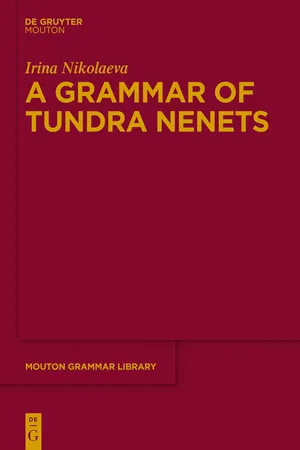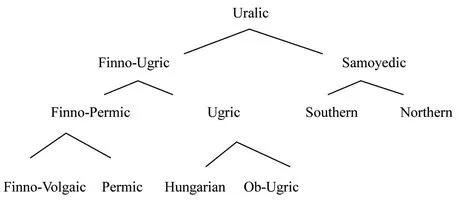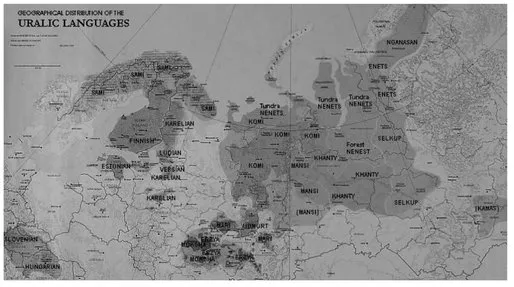
- 526 pages
- English
- ePUB (mobile friendly)
- Available on iOS & Android
A Grammar of Tundra Nenets
About this book
The book is the first substantial description of Tundra Nenets, a highly endangered Uralic language spoken in Western Siberia and the north of European Russia, destined for the international linguistic community. Its purpose is to provide a thorough documentation of all of the major grammatical phenomena in the language. The grammar particularly emphasizes the description of syntax, because this has traditionally been a very neglected area of Nenets studies. Many syntactic aspects have not received a systematic treatment in the existing literature or have not been addressed at all. Since the existing works are not easily available, incomplete, or idiosyncratically presented, Tundra Nenets syntax has played little or no role in the considerations of modern linguists, whether more descriptively or theoretically inclined. The book is largely descriptive: it is not intended to address theoretical questions per se and the description is not meant to be formulated within a particular framework. However, it identifies and discusses issues which are of broad typological and theoretical interest. The description is richly exemplified. Most of the cited examples are the result of fieldwork conducted by the in various locations. They are sentences produced by native speakers either spontaneously or elicited in response to questions posed in Russian. Other examples are excerpts from original texts.
Frequently asked questions
- Essential is ideal for learners and professionals who enjoy exploring a wide range of subjects. Access the Essential Library with 800,000+ trusted titles and best-sellers across business, personal growth, and the humanities. Includes unlimited reading time and Standard Read Aloud voice.
- Complete: Perfect for advanced learners and researchers needing full, unrestricted access. Unlock 1.4M+ books across hundreds of subjects, including academic and specialized titles. The Complete Plan also includes advanced features like Premium Read Aloud and Research Assistant.
Please note we cannot support devices running on iOS 13 and Android 7 or earlier. Learn more about using the app.
Information
Chapter 1
Introduction
1 Tundra Nenets language
1.1 Genetic affiliation


1.2 Geographical location
1.3 Dialects
- (i) Western dialects spoken to the west of the river Pechora, namely, the dialects of Kanin, Timan, Kolguev, and the Malaya Zemlya;
- (ii) Central dialects spoken between the Pechora river and the Ural mountains in the tundra of Bolshaya Zemlya;
- (iii) Eastern or Siberian dialects, spoken to the east of the Urals; these are the dialects spoken in the area near the Ural mountains and on the Yamal Peninsula, as well as the dialects spoken to the east of the Ob Bay (on the rivers Nadym, Taz, and Gydan, and on the Taimyr peninsula).
Table of contents
- Mouton Grammar Library
- Title Page
- Copyright Page
- Acknowledgment
- Table of Contents
- Abbreviations
- Chapter 1 - Introduction
- Chapter 2 - Phonology
- Chapter 3 - Grammatical classes
- Chapter 4 - Nominal inflection
- Chapter 5 - Verbal inflection
- Chapter 6 - Clitics and multi-based affixes
- Chapter 7 - Noun Phrases
- Chapter 8 - Adjectival, adverbial and postpositional phrases
- Chapter 9 - Syntax of simple clauses
- Chapter 10 - Valence patterns and alternations
- Chapter 11 - Non-verbal predicates
- Chapter 12 - Non-declarative clause types and negation
- Chapter 13 - Overview of dependent clauses
- Chapter 14 - Relative clauses
- Chapter 15 - Complement clauses
- Chapter 16 - Adverbial clauses
- Chapter 17 - Anaphoric relations
- Chapter 18 - Coordination
- Chapter 19 - Texts
- References
- Index